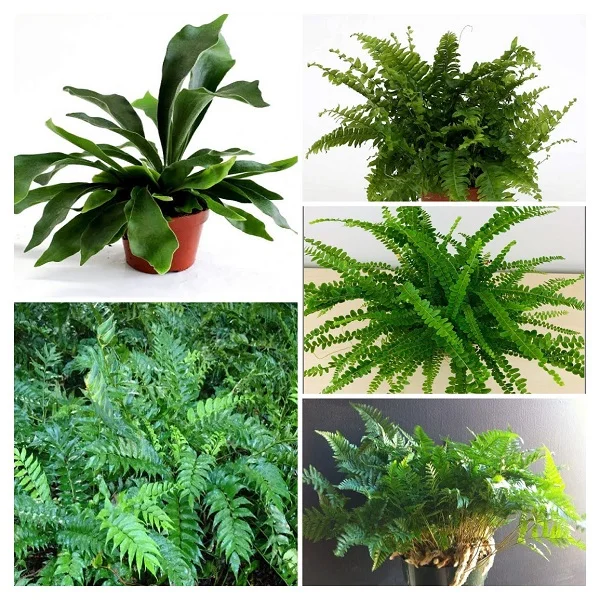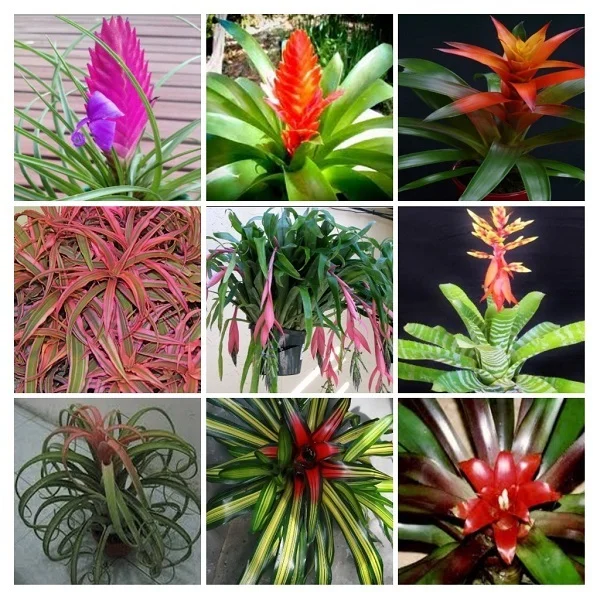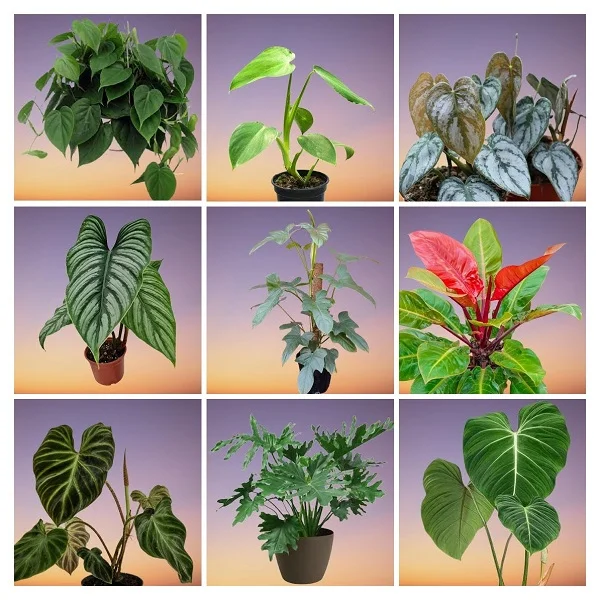11 Types of Palms for Indoors with Names and Pictures
Some links in this post may be affiliate links
Palms are excellent indoor and outdoors plants which add an exotic feel in any space. They come in a wide range of leaf types, sizes and growth habits.
Some palm plants like Kentia Palm (Howea fosteriana) have a cast-iron constitution and easily adapt to indoor growing conditions. Others like Parlour Palm (Chamaedorea elegans) are ideal for a bottle garden or terrarium due to their compact size.
If you are looking to add palm plants to your houseplant collection, below is a list of 11 popular palm types that you can grow indoors succussfully.
11 Palm Plants Types for Indoors
Popular Indoor Palms are Areca Palm, Bamboo Palm, Fishtail Palm, Dwarf Coconut Palm, Parlour Palm, Kentia Palm, Lady Palm, Pygmy Date Palm among others.
1. Areca Palm (Dypsis lutescens)
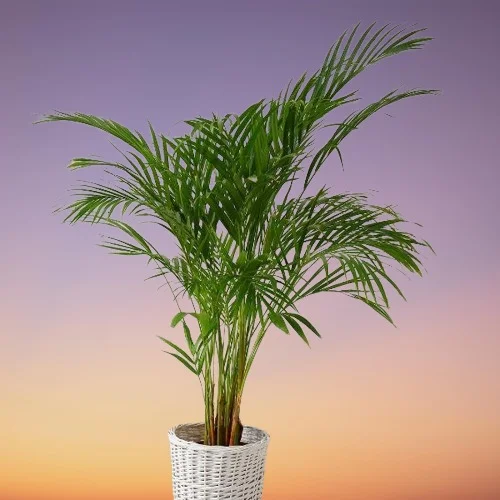
Areca Palm also called Butterfly Palm or Golden Cane Palm is among the most popular palms on account of its yellowish, cane-like stems and yellowish-green, gracefully drooping leaflets and will add an unmatched exotic feel in any space.
Golden Cane Palm can grow to a height of 6-10 feet under good conditions. The fronds may reach 3 feet or more. These characteristics place this palm among the best plants for the living room as it will create a great first impression.
Dypsis lutescens blossoms in bright indirect light (filtered light), warmth of 15-260C, humidity of 50-55% and moderately moist, rich, well-drained potting soil coupled with monthly feeding during the growing season.
Learn more on how to grow and care for Areca Palm
2. Bamboo Palm (Chamaedorea erumpens)
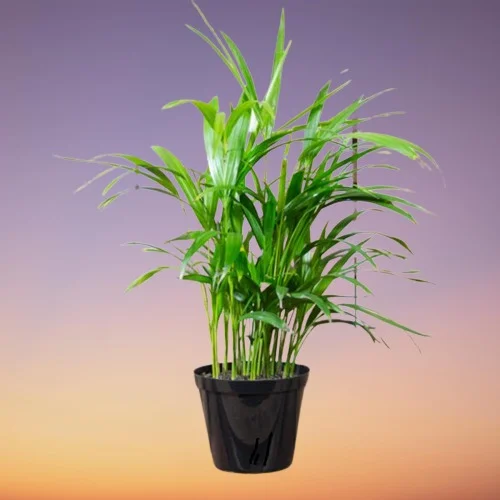
Bamboo Palm is a great focal point plant which bears deep-green, broad leaflets and tall yellowish reed-like stems which look like bamboo canes when mature, hence the common name.
The Bamboo Palm is among the best air-cleaning plants and gets rid of xylene, toulene, benzene, formaldehyde and trichloethylene.
Chamaoderea erumpens prospers in bright indirect light (filtered light), warmth of 15-260C, humidity of 50-55% and moderately moist, fertile, well-drained soil coupled with monthly feeding during the growing season.
3. Canary Island Date Palm (Phoenix canariensis)
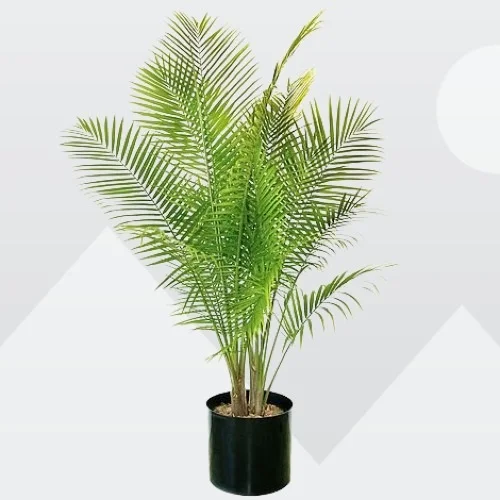
Canary Island Date Palm also called Pineapple Palm bears pinnate leaves with numerous leaflets on a stiff and straight rachis. It is the natural symbol of the Canary Islands.
Pineapple Palm is tolerant to varying soil and light conditions and is moderately drought tolerant which makes it one of the best plants with low water needs.
Phoenix canariensis grows best in bright indirect light (filtered light), warmth of 15-260C, humidity of 55-65% and moderately moist, well drained soil that is rich in organic matter coupled with monthly feeding during the growing season.
Learn more on how to grow and care for Canary Island Date Palm
4. Dwarf Coconut Palm (Syagrus weddelliana)
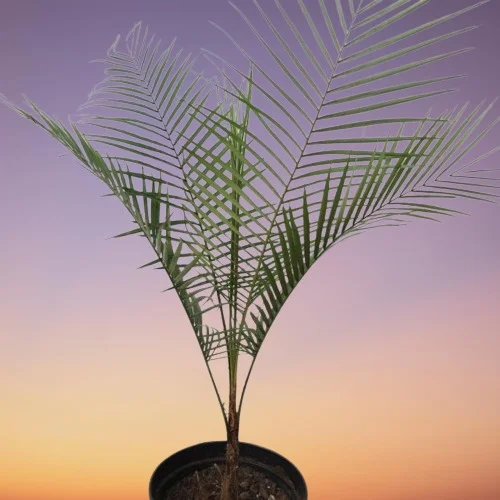
Dwarf Coconut Palm also called Weddell's Palm or Queen Palm is closely related to the coconut palm though it is much smaller and more cold tolerant. However, it does not have the hardiness of most palms and it is difficult to grow under room conditions.
Weddell's Palm is a single trunked palm and produces edible fruits that resemble and taste like coconuts. On account of its requirement for exposure to some direct sunshine for it to thrive, Queen Palm is one of the best sun-loving plants for a sunny location.
Syagrus weddelliana blossoms in very bright light with at least 6-8 hours of direct sunshine, humidity of 60-70%, warmth of 15-250C and moist soil, fertile, free-draining potting soil coupled with monthly feeding during the growing season.
5. Fishtail Palm (Caryota mitis)

Fishtail Palm also called Clustering Fishtail Palm bears lots of ragged-edged leaflets on arching fronds and clustered stems and gets its name from the shape of the leaflets which look like fish tails.
Clustering Fishtail Palm can grow to a height of 8-10 feet which places it among the best tree-like plants and will create a spectacular focal point in any space.
Caryota mitis prospers in bright indirect light (filtered light), warmth of 16-260C, humidity of 50-55% and moderately moist, fertile, well-drained potting soil coupled with monthly feeding during the growing season.
Learn more on how to grow and care for Fishtail Palm
6. Kentia Palm (Howea forsteriana)
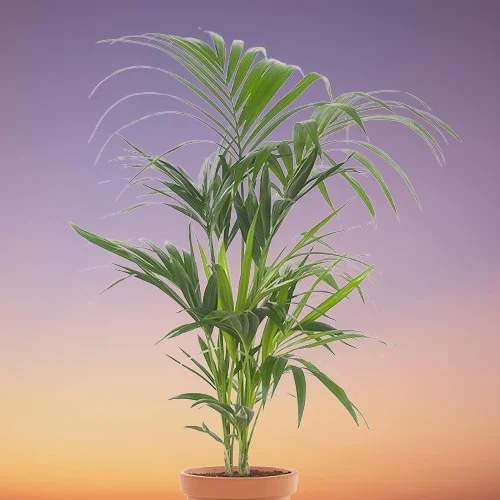
Kentia Palm also called Paradise Palm or Thatch Palm bears feathery fronds which are divided into soft, drooping leaflets on either side of the midrib. It bears thin, slender multi-trunks which are dark-green when young and turn brown as they age.
Paradise Palm has a high tolerance to shade, low humidity, infrequent watering and cool temperatures. It is one of the best low-light plants for the shaded spaces.
Howea forsteriana flourishes in bright indirect light, warmth of 16-280C, humidity of 50-55% and moderately moist, fertile, well-drained soil coupled monthly feeding during the growing season.
7. Lady Palm (Rhapis excelsa)
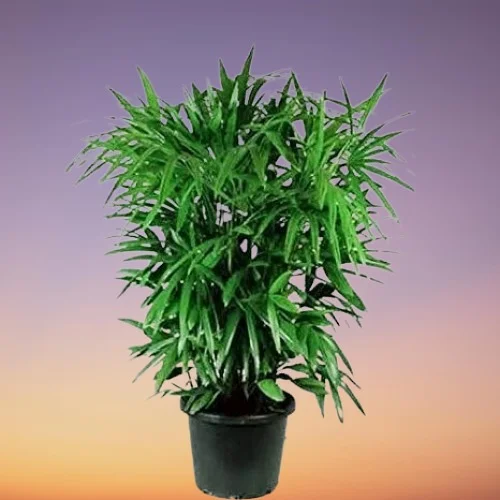
Lady palm is a small-leaved palm with upright stems which produce fronds which are split into numerous fan-like segments radiating from a point at the base like a lady's fan hence the common name.
Lady palm like most palms is among the best tropical foliage plants that will create an attractive sight in any space.
Rhapis excelsa prospers in bright to medium indirect light, warmth of 16-270C, humidity of 50-55% and moderately moist, fertile, well-drained soil coupled with monthly feeding during the growing season.
Learn more on how to grow and care for Lady Palm
8. Parlour Palm (Chamaedorea elegans)

Parlour Palm is a compact palm which produces a dense, deep green, feathery foliage on gracefully arching branches. It also produces tiny yellow flowers and small fruits, once grown and mature if grown under good light.
Parlour Palm is a good indoor air cleaner getting rid of xylene, toulene, benzene, formaldehyde, trichloethylene and ammonia. This coupled with its compact size place it among the best plants for a study table to boost concentration and productivity.
Chamaedorea elegans thrives in bright indirect light, warmth of 15-280C, humidity of 50-55% and moderately moist, fertile, well-drained potting soil coupled with monthly feeding during the growing season.
Read more on how to grow and care for Parlour Palm
9. Pygmy Date Palm (Phoenix roebelenii)
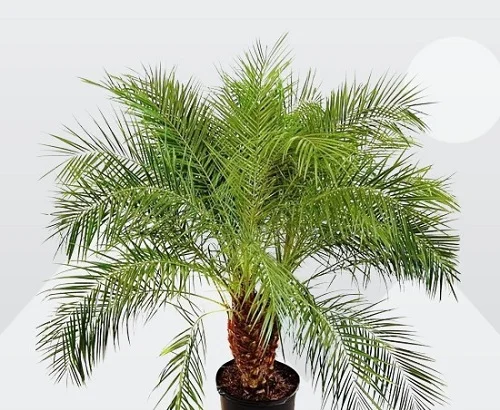
Pygmy Date Palm also called Dwarf Date Palm is a small-sized, slow-growing, slender palm whose leaflets are very narrow, slightly drooping and grey-green in color.
Dwarf Date Palm is a compact, slow-growing, slender tree which grows to a height of 3-5 feet by the same width. These characteristics place this palm among the best plants for limited spaces in the home, office among others.
Phoenix roebelenii blossoms in bright indirect light (filtered light), warmth of 16-280C, humidity of 50-60% and moderately moist, fertile, well drained potting soil coupled with monthly feeding during the growing period.
Learn more on how to grow and care for Pygmy Date Palm
10. Reed Palm (Chamaedorea seifrizii)
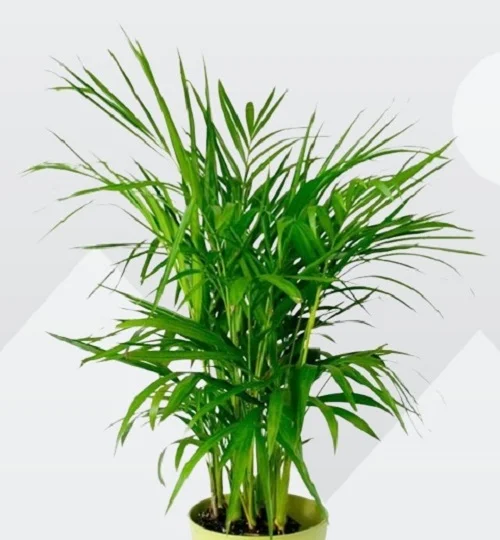
Reed Palm also called Clustered-parlour-palm or Cane Palm is a graceful palm with densely clumping cane-like stems and feathery fronds.
Reed Palm is a 6-10 feet tall palm with a high tolerance to shade placing it among the best low-light indoor trees for the large spaces in the home, office and other suitable spaces.
Chamaoderea seifrizii grows best in bright indirect light, warmth of 15-270C, humidity of 50-55% and moderately moist, rich, well-drained soil coupled with monthly feeding in the growing season.
Read more on how to grow and care for Reed Palm
11. Sentry Palm (Howea belmoreana)
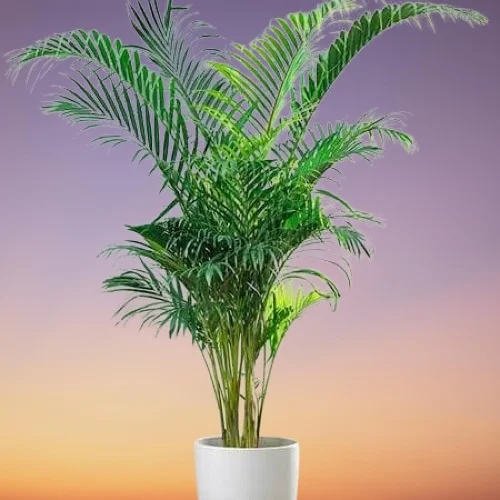
Sentry Palm also called Curly Palm is an attractive palm whose fronds are divided on either side of midrib into leaflets which are soft and drooping. The stems are thin and slender, dark-green when young and turn brown as they age.
Curly Palm easily adapts to a wide range of growing conditions and is among the best plants for a low-light office where it will act as bold statement plant.
Howea belmoreana flourishes in bright indirect light, warmth of 16-270C, humidity of 50-55% and moderately moist, fertile, well-drained soil coupled with monthly feeding during the growing season.
Learn more on how to grow and care for Sentry Palm
You liked it? Share on social media.
Related Content
Amazon Associates Disclosure
Homeplantsguide.com is a participant in the Amazon Services LLC Associates Program, an affiliate advertising program designed to provide a means for sites to earn advertising fees by advertising and linking to amazon.com.
